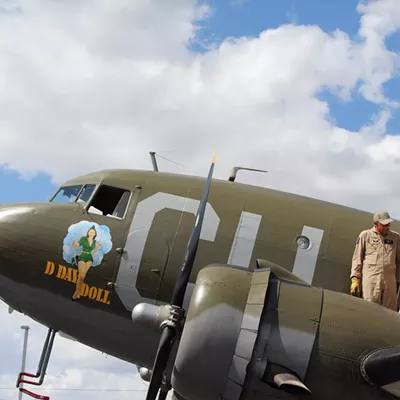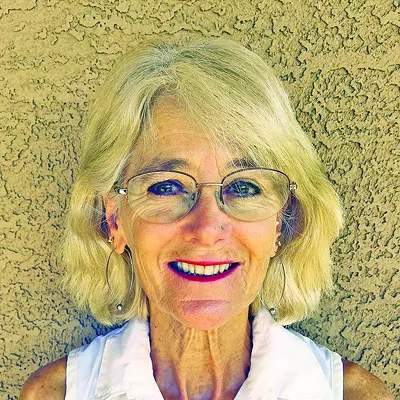Carlos Arruza made his alternativa in 1940 in the Mexico City bullring--the world's largest--becoming a full-fledged matador de toros and a star from that moment on. He became the arch rival and eventually close friend of Spain's great Manolete. He demanded and received the highest fees of any matador of the time. He was nicknamed "El Ciclon," less for his movements in the ring than for his meteoric rise to fame. With his world notoriety and dashing good looks, he was a natural for films and appeared in several major Mexican movies. He also appeared as an aide to Santa Ana in the John Wayne epic, The Alamo, in scenes that showcased his spectacular riding ability. In the latter part of his career, he performed as a rejoneador--a matador who fights on horseback. Arruza retired in 1953 to raise the same breed of bulls he killed in the ring.
Boetticher, a Hemingway-esque character known both for his wit and for brawling (his friend Robert Mitchum comes to mind), was no stranger to Tucson, or to the dusty streets of Old Tucson. He directed numerous Hollywood Westerns--Horizons West, The Man From the Alamo, Comanche Station, A Time for Dying--working with such stars at Randolph Scott, Audie Murphy, Glenn Ford and Rock Hudson. Bullfighting, however, was his true passion.
While still in his 20s, he went to Mexico and studied bullfighting with the legendary Arruza. The two became fast friends. Boetticher's career in Hollywood began when he was hired as a consultant for Ruben Mamoulian's 1940 production of Blood and Sand. His breakthrough as a major director came when he directed The Bullfighter and the Lady with Robert Stack, a semi-autobiographical film about a cocky American who becomes a bullfighter in order to impress a woman.
The Arruza film, narrated by Anthony Quinn, was a labor of love. It took seven years of on-and-off work to complete the film.
"I had planned Arruza to be the Red Shoes of bullfight pictures," Boetticher wrote in his 1989 autobiography, When in Disgrace. "I wanted to smell the bulls and sweat out the stench of impending destruction and death."
At one point, he had an unprecedented 10 cameras in the bullring to capture every moment of the spectacle at every conceivable angle. The picadors and banderilleros were falling over each other trying to keep out of the way.
The film became an obsession which eventually cost him his marriage to actress Debra Paget, as well as most of his money, and it earned him a nervous breakdown and several weeks in prison on trumped-up charges that were later dismissed.
While driving on a rain-slicked highway from Mexico City to Rancho Dolores on May 20, 1966, shortly after the film was completed, Carlos Arruza and several key members of Boetticher's crew were killed in a road accident. Arruza was 46.
Arruza Street is used to transfer sets, lights and equipment for plays and operas performed at the Convention Center theater. Tucson author and teacher Dick Frontain, whose works include We Remember Carlos Arruza and Carlos Arruza--The Golden Years, says, "There's talk of putting up a statue on the street. Arruza fought in Nogales dozens of times. He was a good friend of Tucson's."
Boetticher died in 2001 while working on a film retrospective. He was 84.










